The most valuable medals from the greatest tales of wartime bravery
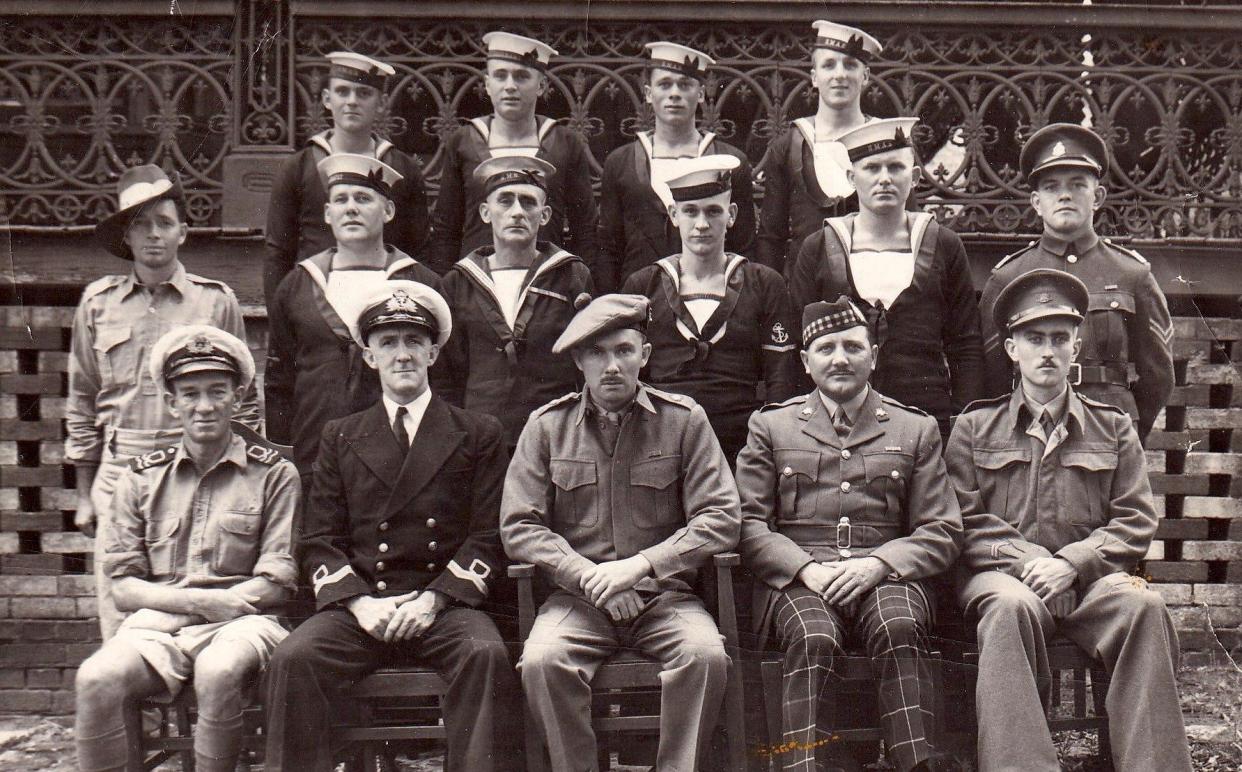
On the evening of September 25 1943, 14 British and Australian special operations executive (SOE) commandos disguised themselves as sarong-wearing Malay fishermen and slipped undetected into Singapore harbour, which the Allies had surrendered to the Japanese 19 months previously.
Swapping their stolen boat, renamed MV Krait, after the small, lethal Asian snake, for a flotilla of collapsible canoes, they used the cover of darkness to deploy delayed limpet mines. Just over three weeks later, all 14 commandos from Z Special Unit, including Major Ronald “Taffy” Morris, a Welsh ex-miner, were safely back in Australia and the Japanese still had no idea how they had lost 37,000 tons of shipping.
“It’s a superb story,” says Oliver Pepys, a medal specialist at Noonans Mayfair, which announced this week that it expects to raise up to £80,000 from the auction of Major Morris’s Military Medal. “The majority of awards for gallantry in the Second World War are worth £1,000-£3,000. But Operation Jaywick has got Special Forces operating deep behind enemy lines – it’s got everything going for it.”
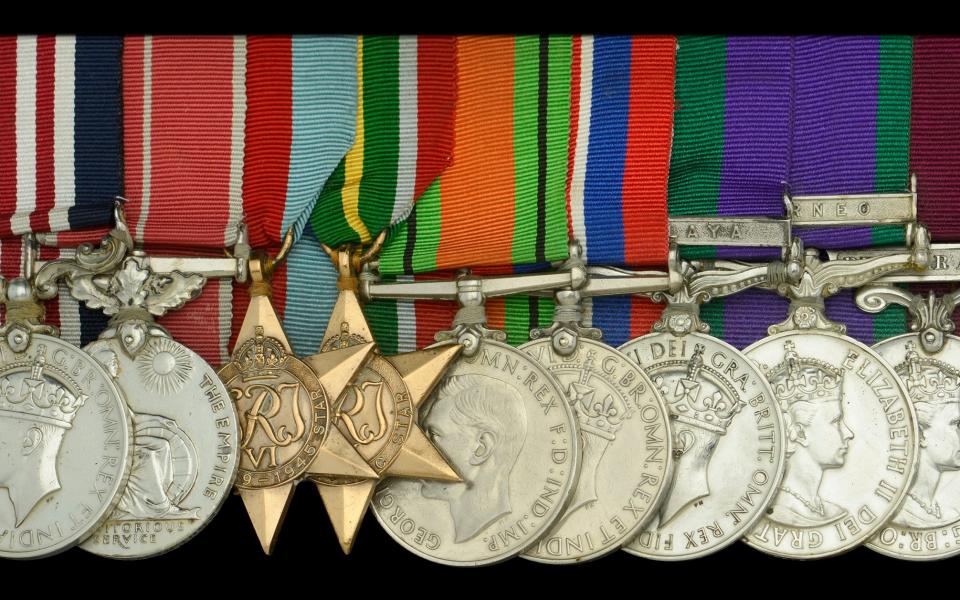
This isn’t just the sales bluster of the man with the golden hammer. “Operation Jaywick was a very rare raid with few people,” agrees Mark Smith, the long-serving medal expert on Antiques Roadshow. “It also gives a unique insight into that theatre of war.”
Jaywick is not, however, the only daring wartime operation that continues to excite contemporary imaginations – and collectors’ wallets. As a rule of thumb, the more outlandish the operation, the smaller the number of people involved and the larger their personalities, the heftier the price tag on any medals in the open market.
“A medal is just a medal,” says Smith. “The fascinating thing about collecting them is that every single story is different.”
Lord Ashcroft, the billionaire former Conservative Party deputy chairman, has amassed the world’s largest collection of Victoria Crosses, the highest award for gallantry, including that of Captain Noel Chavasse, a medic and Olympic athlete who saved dozen of lives on the Western Front despite being mortally injured in 1917 (and for whose medals Ashcroft paid £1.5 million in 2009).
Ashcroft’s collection ranges from the Crimean War to the Falklands, but it is the medals awarded during the Second World War that reveal some of the best stories.
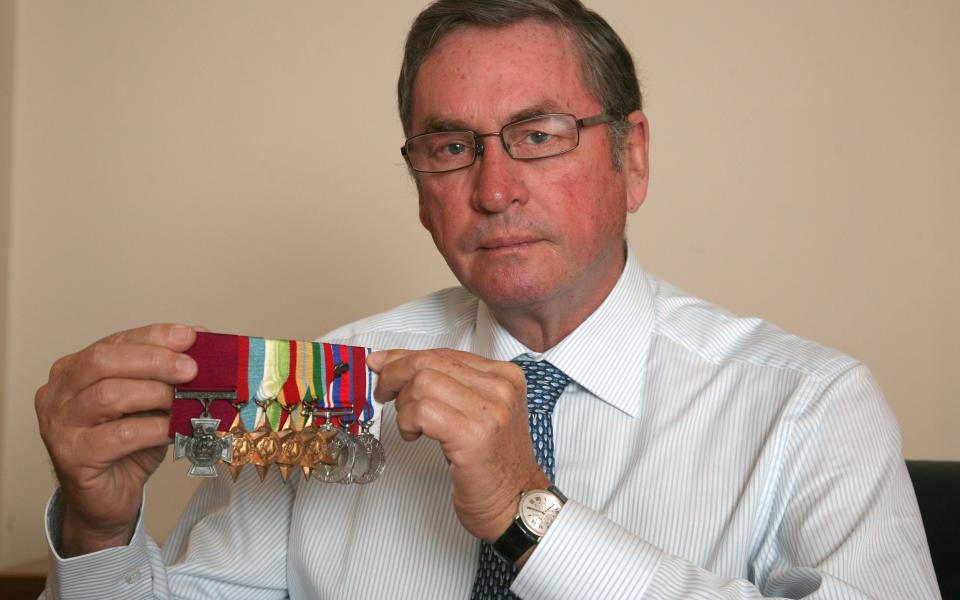
Operation Frankton in December 1942 has some similarities to Operation Jaywick: a small group of commandos using canoes and limpet mines to attack enemy shipping. But in this instance, the canoes were delivered by a British submarine; only four of the original 12 men made it to the target in Bordeaux; and only two of those made it home again, having trekked to safety across the Pyrenees disguised as French peasants. Ashcroft bought one of their medal collections for £31,000.
He also appears to have paid £36,000 for the medals awarded to Bruce Ogden-Smith, a sergeant with the Special Boat Section (later the Special Boat Service) who spent much of 1944 swimming on to occupied Normandy beaches, armed only with a knife and a waterproof Colt 45, and returning with sand samples to help the Allies prepare for D-Day.
The most prized wartime RAF medals are those awarded for the Battle of Britain and Operation Chastise, the Dambusters’ raid. Earlier this month, the medals of Flight Lieutenant Edward “Johnnie” Johnson, one of the airmen involved in the bouncing bombs that breached Germany’s dams in the Ruhr, were sold for £105,000, 50 per cent higher than the expected price.
“Medals have a habit of becoming more expensive when a film has helped an event permeate the public consciousness,” says Smith.
The Cockleshell Heroes, which immortalised Operation Frankton, was released in 1955, the same year as The Dam Busters. And despite Hollywood’s attempt to claim unique American credit in the 2000 film U-571 for capturing the Enigma cipher machine, British sailors had already achieved this feat before the USA had even entered the war.
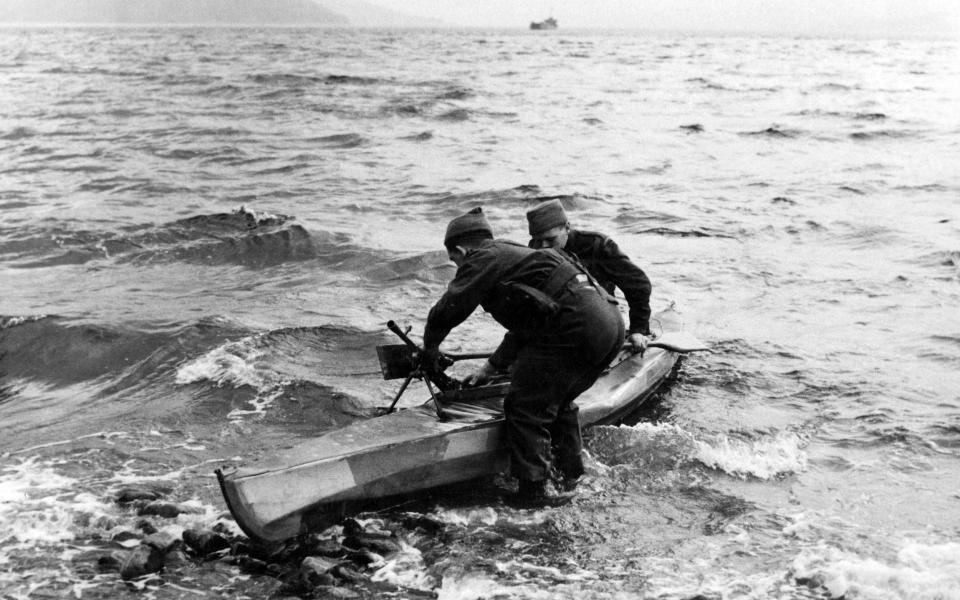
While capturing additional copies of German codebooks in the Mediterranean in October 1942, two British sailors swam backwards and forwards between HMS Petard and a stricken U-boat before going down with the German submarine. Both were awarded the George Cross, missing out on the Victoria Cross only because they hadn’t come under enemy fire. The Distinguished Service Order (DSO) awarded to the Commander of Petard was sold for £7,000 at auction in 2020.
Two other daring raids were also made into films in the 1960s: The Heroes of Telemark, which celebrates Operation
Gunnerside, the SOE’s cross-country skiing sabotage of the Nazi attempt to build an atomic bomb in Norway; and Attack on the Iron Coast, which commemorates Operation Chariot, a 1942 raid on the French port of St Nazaire.
“They turned a dead ship into a live bomb and sailed it down the throat of the enemy!” shouts the promotional poster for Attack on the Iron Coast. Or to put it another way, in March 1942, a First World War destroyer was packed with four tons of explosive, modified to “look a bit Hunnish”, in the words of one of the commandos, sailed 400 miles through hostile waters and detonated in the Loire estuary, putting the dry dock that threatened Britain’s Atlantic supply line out of action for the rest of the war.
Of the 622 men who took part, 168 were killed, 214 were taken prisoner and over 100 were awarded gallantry medals, including five Victoria Crosses, a record for a single action. A Distinguished Service Medal (DSM) belonging to an Australian lieutenant who steered one of the accompanying “little ships” home again raised £5,500 at auction in September 2017.
There is no sign of waning interest in Second World War medals, partly because the operations of its less conventional units remain so strong in the public consciousness. Last year the BBC drama SAS: Rogue Heroes introduced a new generation to tales of the SAS’s derring-do. Although the unit’s first operation in 1941, codenamed Squatter, saw them suffer 34 out of 55 casualties in Libya while failing to destroy a single enemy aircraft, they were soon launching audaciously successful raids across the North African desert.
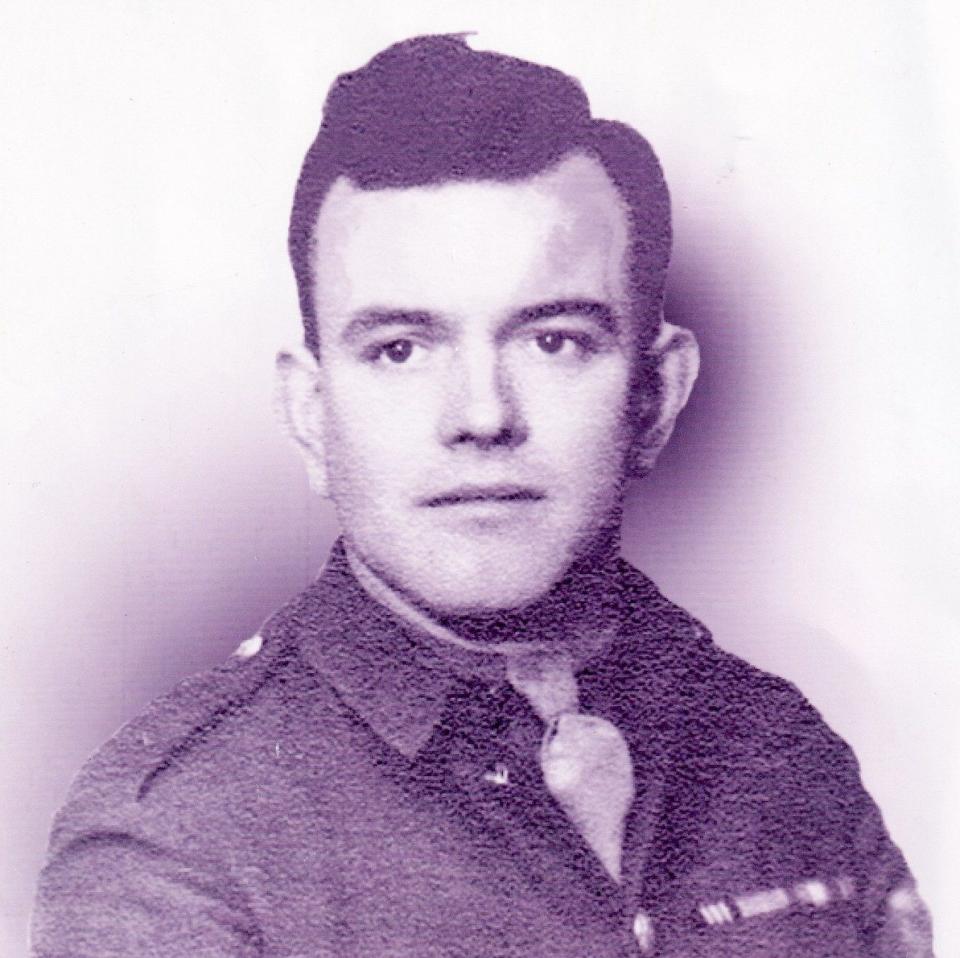
The SAS came into its own in the Italian campaign at the end of the war under the command of Lieutenant Colonel Paddy Mayne, a highly decorated former Irish rugby player who had personally destroyed more than 100 German aircraft.
In March 1945, Operation Tombola saw the SAS join forces with the SOE to attack the headquarters of the German 14th Army, its location revealed by loose German pillow talk with Italian spies. Ignoring a last-minute change in orders, Major Roy Farran of the SAS “accidentally” tumbled out of a plane (fortunately, he was wearing a parachute) alongside a kilted bagpiper so that the Germans would blame the British and not Italian citizens.
High on Benzedrine, Farran’s rag-tag team of 20 SAS commandos and 80 foreign fighters, including escaped Soviet PoWs, Italian freedom fighters and a Dutchman wielding an ice axe, destroyed the German base, taking no prisoners. A Military Medal belonging to one of the SAS privates was sold for £50,000 in May 2015.
Lt Col Mayne’s medals, diaries and letters were donated by his relatives to a museum in Ballyclare, Northern Ireland, in 2019. Other families have been less fortunate. When Minnie Driver, the Hollywood actress, went on the BBC’s Who Do You Think You Are? in 2013, she discovered that her Welsh father had thrown his Distinguished Flying Medal in the Thames, angry that he had failed to save his best friend when they crashed in the North Sea in 1939.
This newspaper has featured two obituaries in the past month of servicemen – the RAF’s top night fighter ace in the Second World War and a colour sergeant in the Falklands War – who have sold their medals for more than £50,000 to fund their care in old age.
“The Falklands War is very popular for collectors,” says Pepys. “Far more so than Iraq or Afghanistan.”
It is, however, the “forgotten” Korean War which holds the record for the most expensive George Cross, sold in 2021 for £280,000 and awarded to the 22-year-old Lieutenant T E Waters, who died in captivity in 1951 after refusing to accept better treatment in return for participating in a communist propaganda campaign.
“Medals allow you to act like a time machine,” says Smith. “You can take that man back to that battlefield and you can be there with them. If those medals didn’t exist, that story would be lost forever – and that would be terrible.”

